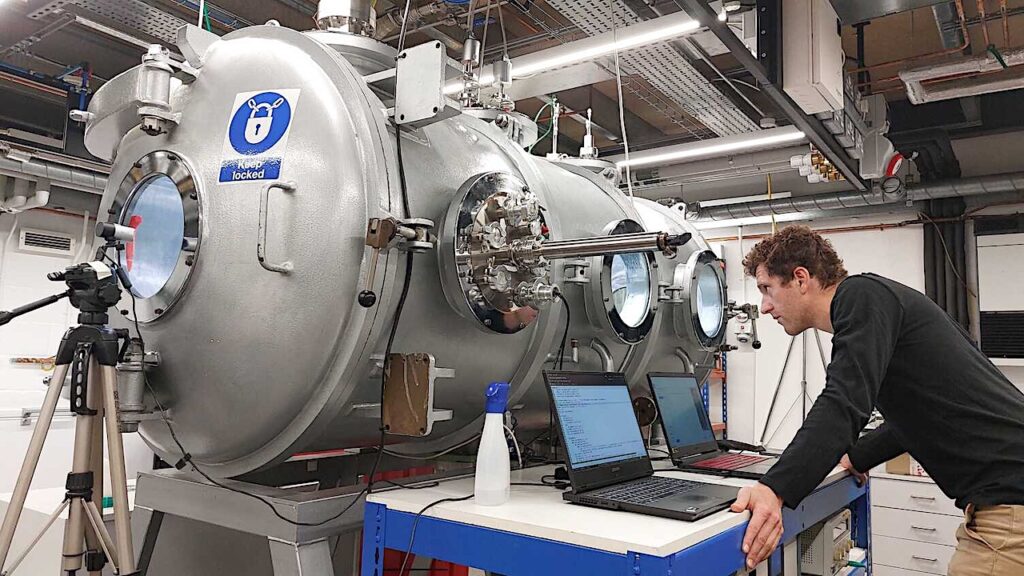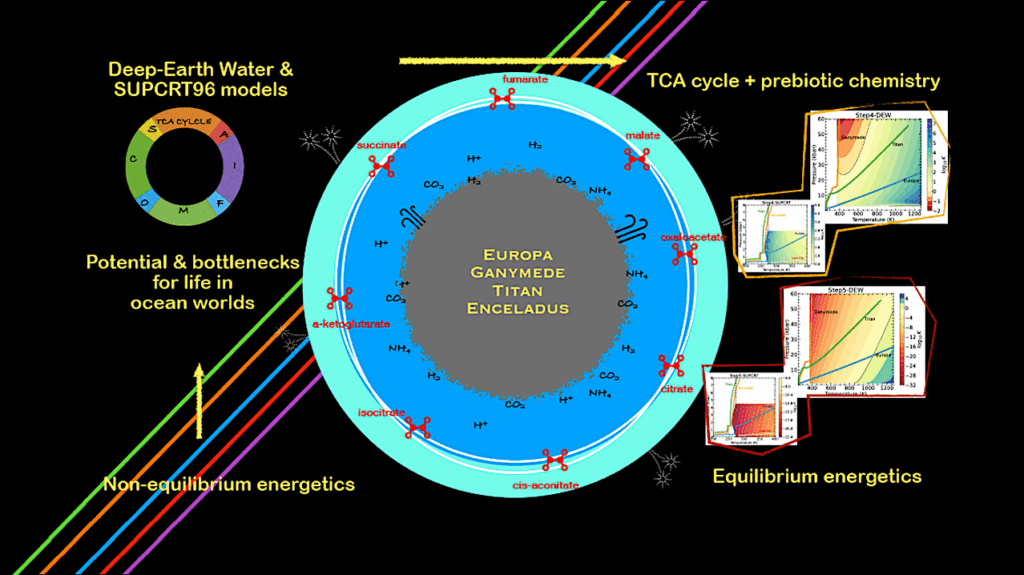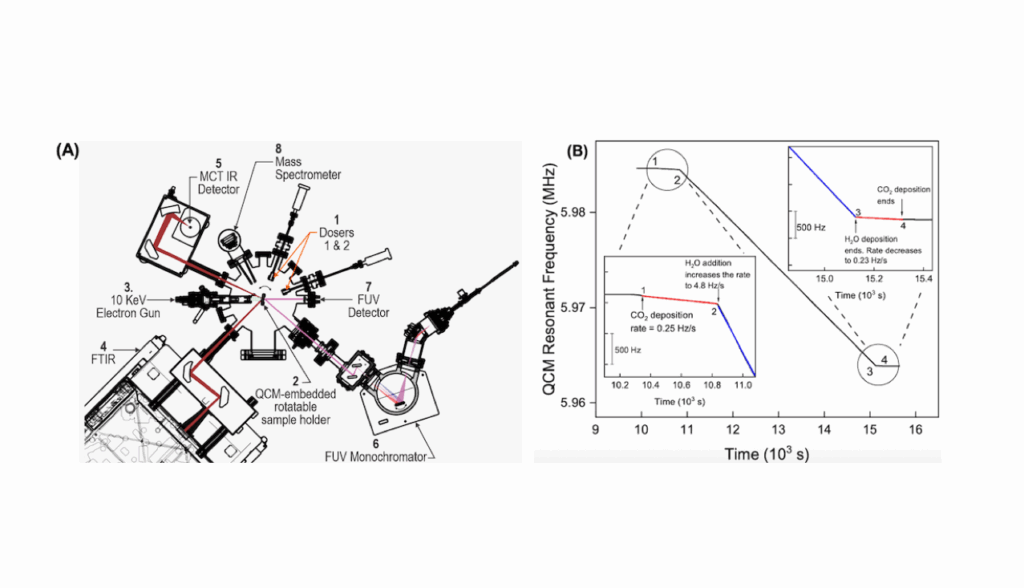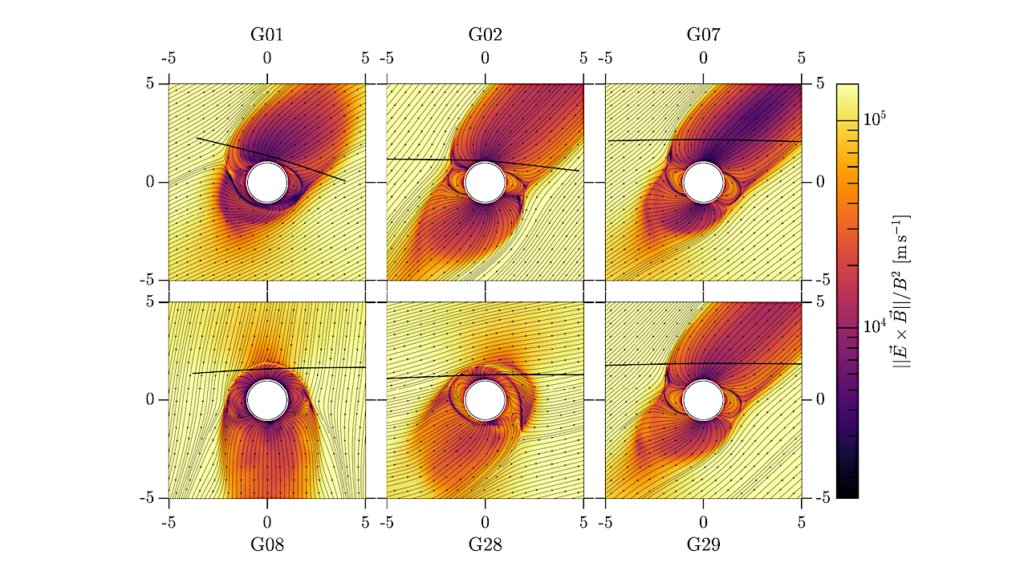Global Modelling of Ganymede’s Surface Composition: Near-IR Mapping from VLT/SPHERE
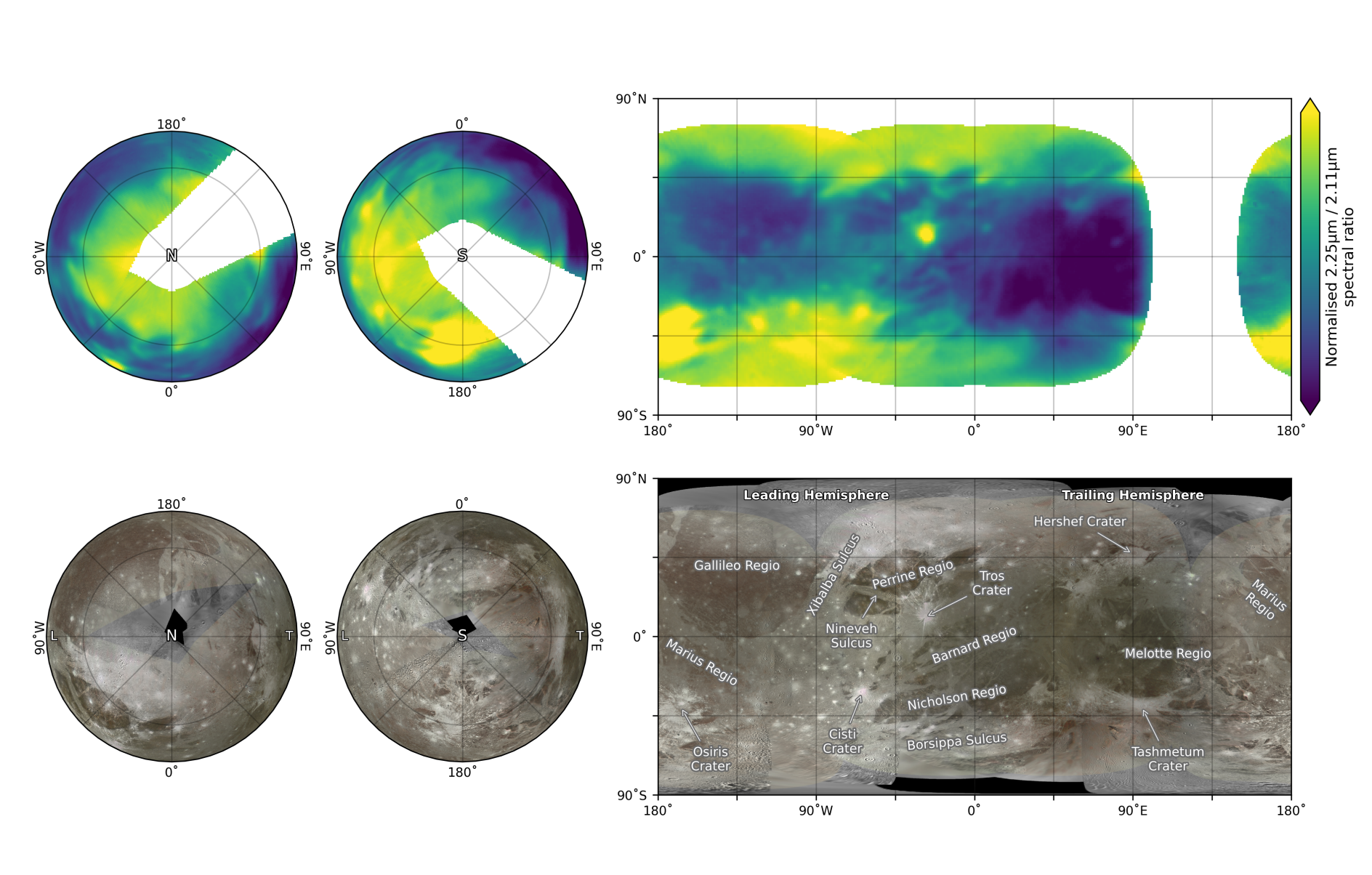
We present maps of Ganymede’s surface composition with almost complete longitude coverage, acquired using high spatial resolution near-infrared (0.95 to 1.65μm) observations from the ground-based VLT/SPHERE instrument.
Observed reflectance spectra were modelled using a Markov Chain Monte Carlo method to estimate abundances and associated uncertainties of water ices, acids, salts and a spectrally-flat darkening agent. Results confirm Ganymede’s surface is dominated by water ice in young bright terrain (impact craters, sulci), and low-albedo spectrally-flat material in older dark terrain (e.g. Galileo Regio). Ice grain size has strong latitudinal and longitudinal gradients, with larger grains at the equator and on the trailing hemisphere.
These trends are consistent with the effects of the latitudinal thermal gradient and global variations in radiation driven sputtering. Sulphuric acid has a low abundance and appears potentially spatially correlated with plasma bombardment, where Ganymede’s poles are exposed to the external jovian magnetic field. Best-estimate abundances suggest a mixture of salts could be present, although their low abundances, spectral degeneracies and associated uncertainties mean individual salt species cannot be detected with confidence.
If present, sodium magnesium sulphate and magnesium chlorate appear tentatively correlated with exogenic plasma bombardment, while magnesium chloride and sulphate appear tentatively correlated with younger terrain, implying a possible endogenic origin. MCMC modelling was also performed on Galileo/NIMS data, showing comparable distributions.
The high spatial resolution of SPHERE allows the precise mapping of small scale (<150km) surface features, which could be used along with higher spectral resolution observations to jointly confirm the presence and distribution of potential species.
Oliver King, Leigh N. Fletcher
Comments: To be published in JGR: Planets
Subjects: Earth and Planetary Astrophysics (astro-ph.EP)
Cite as: arXiv:2209.01976 [astro-ph.EP] (or arXiv:2209.01976v1 [astro-ph.EP] for this version)
Related DOI:
https://doi.org/10.1029/2022JE007323
Focus to learn more
Submission history
From: Oliver King
[v1] Mon, 5 Sep 2022 14:04:17 UTC (46,529 KB)
Full paper: https://arxiv.org/abs/2209.01976
Astrobiology


